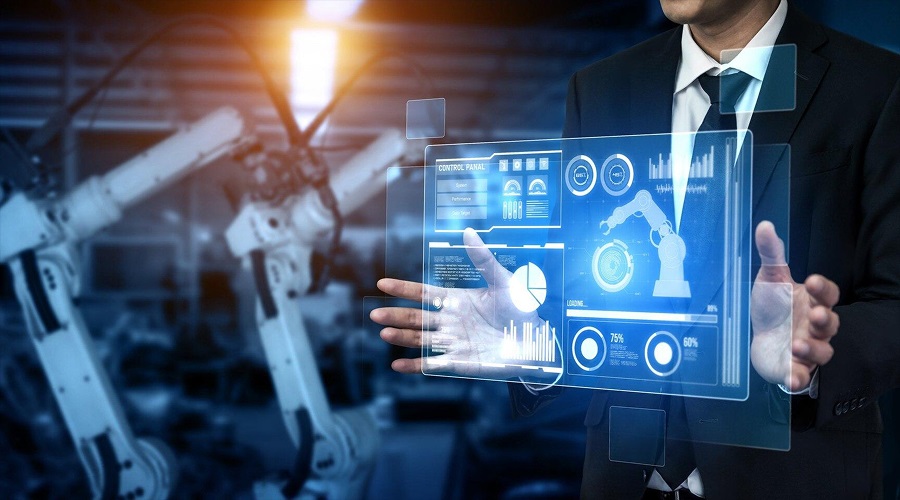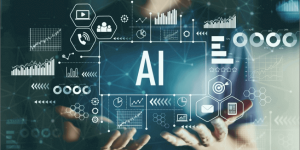
Experts across all parts of the world are finding something unusual about artificial intelligence, and that is, it is not the way we work that is being transformed; it is a transformation in the way we connect. The research showed that organizations are currently earning an average of $3.70 out of every dollar spent on generative AI.
This outshining ROI says a lot about what AI can do for the operations of a business. These numbers can no longer be disregarded by companies they are evidence that AI in business is not just a trend but the basis of the connected enterprises of the future.
How AI is Revolutionizing the Current Business
Modern businesses experience new levels of connectivity issues. Distributed workforces require smoother collaboration mechanisms, clients have become used to getting their demands immediately, and the supply chains require real-time organization between continents.
1. Smart Communication Networks
Artificial intelligence communication networks are all transforming. Chatbots are also powered by AI and allow customers to request service 24/7, whereas smart assistants could automatically set meetings across the time zone barrier. Those systems do not only react, they get to learn upon each interaction.
The United States remains at the forefront of digital innovation, fostering technologies that support both domestic and international collaboration. Its infrastructure enables seamless communication across industries and continents. Within this landscape, esim usa has emerged as a practical tool for staying connected, allowing professionals to operate efficiently no matter where work takes them.
2. Predictive System Management
AI technology in business excels at predicting problems before they occur. Network monitoring systems analyze traffic patterns continuously, identifying bottlenecks hours before users notice slowdowns. This proactive approach keeps businesses running smoothly.
These predictive capabilities extend beyond technical infrastructure. AI analyzes communication patterns to suggest optimal meeting times, predicts when teams might need additional resources, and even identifies potential collaboration opportunities between departments.
3. Real-Time Data Integration
Perhaps most importantly, AI connects disparate data sources instantly. Sales teams access customer history while marketing sees campaign performance data, all through unified dashboards that update in real time. This integration transforms how businesses operate fundamentally.
Moving forward, we’ll explore how AI specifically enhances communication across organizations.
The Revolution in Business Communication
Enhancing business communication through AI isn’t science fiction anymore – it’s happening right now in offices worldwide. Companies are discovering that AI doesn’t replace human connection; it amplifies it.
1. Smart Translation and Localization
Language barriers dissolve when AI handles translation instantly. Teams in Tokyo collaborate with colleagues in São Paulo as naturally as if they’re in the same room. AI translation tools maintain context and tone, something impossible just years ago.
These systems adapt to company-specific terminology, too. They learn industry jargon, brand voice, and even cultural nuances that make communication more effective across global teams.
2. Automated Content Generation
AI assists with everything from email drafts to presentation creation. Busy executives save hours weekly by having AI generate initial content drafts, which they then personalize and refine. This efficiency gain allows more time for strategic thinking and relationship building.
3. Personalized Communication Experiences
Each customer interaction becomes unique when AI analyzes preferences, purchase history, and communication patterns. Marketing messages feel personal because they are – AI customizes content for individual recipients automatically.
This personalization extends internally, too. Employee communications adapt to individual work styles, preferences, and departmental needs, creating more engaging workplace experiences.
The transformation continues as we examine AI’s role in operational efficiency.
Streamlining Operations Through Artificial Intelligence

Seamless business solutions emerge when AI handles routine tasks while humans focus on creativity and strategy. This shift represents a fundamental change in how work gets done.
1. Process Automation Excellence
Repetitive tasks disappear when AI takes over. Invoice processing, appointment scheduling, and basic customer inquiries happen automatically. Teams redirect their energy toward innovation and problem-solving instead of administrative work.
The accuracy rates for AI-handled processes often exceed human performance, especially for data-heavy tasks. Errors decrease while speed increases dramatically.
2. Supply Chain Optimization
AI-driven connectivity transforms supply chain management completely. Systems predict demand fluctuations, optimize shipping routes, and coordinate with suppliers automatically. These capabilities reduce costs while improving reliability.
Inventory management becomes almost effortless when AI analyzes sales patterns, seasonal trends, and external factors like weather or economic indicators. Stockouts become rare while overstock situations decrease significantly.
3. Resource Allocation Intelligence
AI analyzes workload patterns to suggest optimal team assignments and project timelines. It identifies when departments need additional support and recommends resource reallocation before problems develop.
This intelligent resource management extends to physical assets too – AI optimizes office space usage, equipment scheduling, and facility management tasks.
As operations become more efficient, we must consider emerging trends shaping the future.
Emerging Trends in AI-Powered Connectivity
AI trends in business point toward an increasingly connected future where systems anticipate needs rather than simply responding to them. The next wave of innovations promises even more dramatic changes.
1. Autonomous Decision-Making Systems
AI systems are moving beyond recommendations to make decisions independently. These systems handle routine choices while escalating complex situations to human oversight. The balance shifts toward AI managing operations while humans provide strategic direction. Trust builds gradually as these systems prove their reliability. Companies start with low-risk decisions and expand AI authority as confidence grows.
2. Cross-Platform Integration
The future of business connectivity depends on systems that communicate seamlessly across different platforms and vendors. AI serves as the translator, connecting CRM systems with accounting software, linking marketing platforms to customer service tools, and synchronizing everything in real-time.
This integration eliminates data silos that have plagued businesses for decades. Information flows freely between departments, creating unprecedented visibility into operations.
3. Predictive Relationship Management
AI analyzes communication patterns to predict relationship health with customers, partners, and employees. It suggests interventions before problems develop and identifies opportunities for stronger connections.
These insights help maintain relationships proactively rather than reactively, transforming how businesses approach stakeholder management. Next, let’s examine how AI maximizes efficiency across different business functions.
Optimizing AI for Efficiency

AI takes business efficiency to a whole new level when there is a collaboration between interconnected systems. The combination of various AI tools allows more than the additive capabilities of the individual tools.
1. Workflow Optimization
AI analyzes the flow of work in organizations, including bottlenecks and proposes their elimination. It detects schedules that people cannot detect and offers solutions that are solutions that raise throughput without complexity.
Such optimizations come as a surprise to managers. AI may tell you to merge unrelated workload or divide intricate work into unfamiliar but more effective division.
2. Performance Analytics
The monitoring of performance in real-time becomes extremely advanced with the analysis of AI. Systems not only track events, but explain why events happen, which improves constant enhancement.
The feedback is given to the teams continuously instead of waiting during quarterly reviews. With this fast cycle of iteration, learning and adaptation within organizations are tracked.
3. Adaptive Learning Systems
Maybe the most interesting thing is that AI systems can adapt to any interaction and learn. In time they get more efficient as they adapt their strategy and approach to a particular user, or circumstance.
Such adaptive ability ensures that AI tools gain value over their application and that positive feedback loops facilitate further enhancement.
The Path Forward for Connected Businesses
The evidence overwhelmingly supports one conclusion: artificial intelligence for connectivity isn’t optional anymore. Companies that embrace AI now position themselves for success in an increasingly connected world. Those who hesitate risk falling behind competitors who are already reaping the benefits of intelligent automation and enhanced communication capabilities.
Perhaps most importantly, AI democratizes advanced capabilities that were once available only to the largest corporations. Small businesses can now access sophisticated tools that level the playing field, creating opportunities for innovation and growth that didn’t exist before. The future belongs to organizations that view AI not as a threat, but as the ultimate enabler of human potential and business success.
FAQ’s
Q1. How is AI shaping the future of business communication?
It improves speed, efficiency, and personalization. Companies now rely on AI to streamline conversations with customers, employees, and stakeholders. AI-powered chatbots answer queries, smart assistants schedule meetings, and AI tools draft emails. These changes make communication faster and more effective.
Q2. How does AI improve connectivity?
Network optimization becomes smarter with AI analysis. By continuously analyzing network traffic patterns, AI systems identify potential bottlenecks or inefficiencies 24/7 in real-time, allowing networks to adjust dynamically for the best possible performance across all connected systems.
Q3. What is the future of AI in business?
Artificial intelligence is poised to revolutionize enterprise applications, transforming everything from customer service to supply chain management. Businesses can expect significant efficiency gains with AI’s ability to streamline processes, enhance decision-making, and personalize user experiences.






